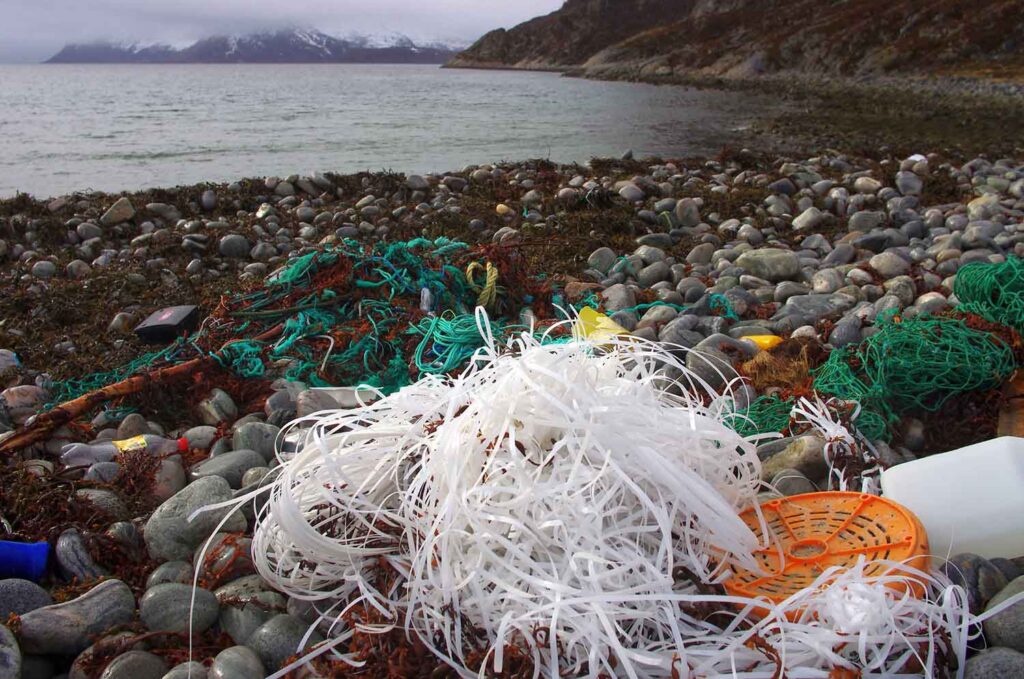Impressive stories of ghost fishing-gear recoveries by dedicated dive-teams are familiar to Divernet readers, but a new report from Australia claims for the first time to establish the scale of what these divers – and threatened marine life – are up against.
Also read: Ghost Fishing UK divers on Shetland net mission
Claimed to be the most comprehensive examination yet of the amount of fishing-gear abandoned, lost or discarded globally, its authors reckon that 1.8% of all commercial fishing gear is left in the oceans every year, making it a major component of global marine plastic pollution.
At the same time the study, by the Commonwealth Scientific & Industrial Research Organisation (CSIRO) and the University of Tasmania, recognises that some progress is being made and has been able to revise down estimates of future rates of loss.
Enough fishing-line to wrap around the Earth 18 times is currently being lost annually, say the researchers. Annual losses consist of some 740,000km of main long-lines and 15.5 million km of branch-lines, along with 13 billion longline hooks.
The staggering annual figures for ghost-net losses comprise 78,000sq km of purse seine and gill-nets and 215sq km of bottom-trawl nets – altogether covering an area the size of Italy. And that’s without including the 25 million traps and pots lost each year.

The research is based on global fishing-effort data and interviews with 450 fishers from seven countries: USA, Morocco, Indonesia, Belize, Peru, Iceland and New Zealand. The researchers studied the five major fishing-gear types, determining how much of this was used and lost annually, and the characteristics of both the gear and the fishing-boats themselves that could influence the losses.
More gear tended to be lost from smaller fishing vessels and – perhaps unsurprisingly – bottom-trawl fishers lost more net than those operating in midwater.
The researchers say that previous published data on amounts of fishing-gear being lost was based on literature reviews and unreliable – including the “outdated and ill-quoted estimate of 640,000 metric tons lost each year”. They have presented “much lower” overall estimates of future losses.
These new estimates are based on data that “came directly from fishers themselves to inform our understanding of fishing-gear losses at source,” says the study’s lead author Kelsey Richardson. “There have been increases in global fishing-effort, as well as improvements in fishing technologies, including better opportunities to mark, track and recover fishing-gears.

“Our updated estimates help to highlight where efforts need to focus to support fisheries-management and gear-stewardship interventions to generate targeted solutions to reduce fishing-gear ending up in our oceans,” says Richardson.
Suggested interventions could involve local governments buying back the sort of older fishing-gear that was most likely to be lost. Gear could be tagged, and free facilities provided to encourage safe disposal of unusable nets. There will, however, be no let-up in the need for volunteer divers’ services to clear existing ghost-gear.
CSIRO says that the research paper feeds into its “Ending Plastic Waste Mission”, which aims at an 80% reduction in plastic waste entering the environment by 2030. It is published in Science Advances.
Also on Divernet: Freedivers Clear 44 Tonnes Of Ghost-Net, Divers Free Ghost-Netted Humpback, Net Result For Ghost Diving USA, Ghost Divers Collect Net – And Data

